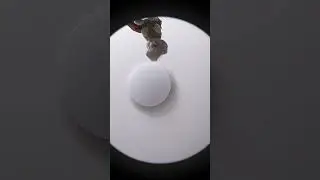Empty & Nested Tuples | Python 4 You | Lecture 123
Creating Empty and Nested Tuples in Python
Tuples are a versatile and immutable data structure in Python, allowing you to store collections of items. In this discussion, we will focus on two specific aspects of tuples: creating empty tuples and creating nested tuples. These concepts are essential in Python programming and are used in various scenarios.
Creating an Empty Tuple
An empty tuple, as the name suggests, is a tuple that contains no elements. You can create an empty tuple by using empty parentheses. While it may seem counterintuitive to create a collection with no elements, empty tuples have practical uses in Python.
Here's how you create an empty tuple:
empty_tuple = ()
The empty_tuple variable is now an empty tuple that can be used to store data at a later point in your program. Empty tuples are useful when you want to initialize a container for data that will be added over time, ensuring that the structure remains a tuple.
Singleton Tuples
In some cases, you might need a tuple containing a single element, often referred to as a "singleton tuple." Creating a singleton tuple requires including a comma after the element, even if there's only one value. This is to differentiate it from a regular value enclosed in parentheses.
Here's how you create a singleton tuple:
singleton_tuple = (42,)
In this example, the comma after 42 signifies that singleton_tuple is indeed a tuple containing a single element. This distinction is important when working with functions that expect tuples as arguments.
Creating Nested Tuples
Nested tuples are tuples that contain other tuples as their elements. These nested structures allow you to organize and represent more complex data. To create a nested tuple, you can use any of the previously mentioned methods while paying attention to the structure you want to achieve.
Here's an example of creating a nested tuple:
python code
nested_tuple = (1, 2, (3, 4))
In this case, nested_tuple contains three elements. The third element is another tuple (3, 4). You can nest tuples to represent hierarchical or multidimensional data structures, such as matrices, coordinates, or complex records.
Nested tuples are particularly useful when you need to maintain the integrity and structure of data. Because tuples are immutable, once created, their elements cannot be changed. This immutability ensures that the data structure remains consistent.
Practical Use Cases
Creating empty and nested tuples might seem simple, but these concepts are widely used in various Python programs:
Function Returns: Functions often return multiple values as a tuple. If a function doesn't have a meaningful value to return, it might return an empty tuple to indicate the absence of a result.
Data Structures: Nested tuples are essential in representing complex data structures. For example, you can use a tuple to store a person's information, and nest it within another tuple to create a list of people.
Database Queries: When interacting with databases, you might receive results as tuples. Empty tuples can represent a query with no results, while nested tuples can organize related data.
Configuration: Tuples are useful for storing configuration settings, and nesting them allows you to structure configurations hierarchically.
Error Handling: Some functions return error codes or messages as tuples. An empty tuple can indicate a successful operation, while a tuple with an error message can be used to handle exceptions.
In conclusion, creating empty and nested tuples in Python is a fundamental skill that every programmer should master. These concepts enable you to work with immutable and structured data, making your code more robust and efficient. Whether you need to represent single values, organize complex data, or handle various programming scenarios, understanding how to create and use empty and nested tuples is a valuable asset in Python programming.#python4 #pythontutorial #pythonprogramming #python3 #pythonforbeginners #pythonlectures #pythonprograms #pythonlatest #rehanblogger #python4you #pythonlatestversion #pythonlatestversion Learn python3.12.0 and latest version of python3.13. If you are searching for python3.13.0 lessons, you are at the right place as this course will be very helpful for python learners or python beginners.







![Nioh 2 Build Showcase: The Wandering Exorcist - Purity Build [Detail's in the Description Below]](https://images.videosashka.com/watch/vKFoDaJpzvg)